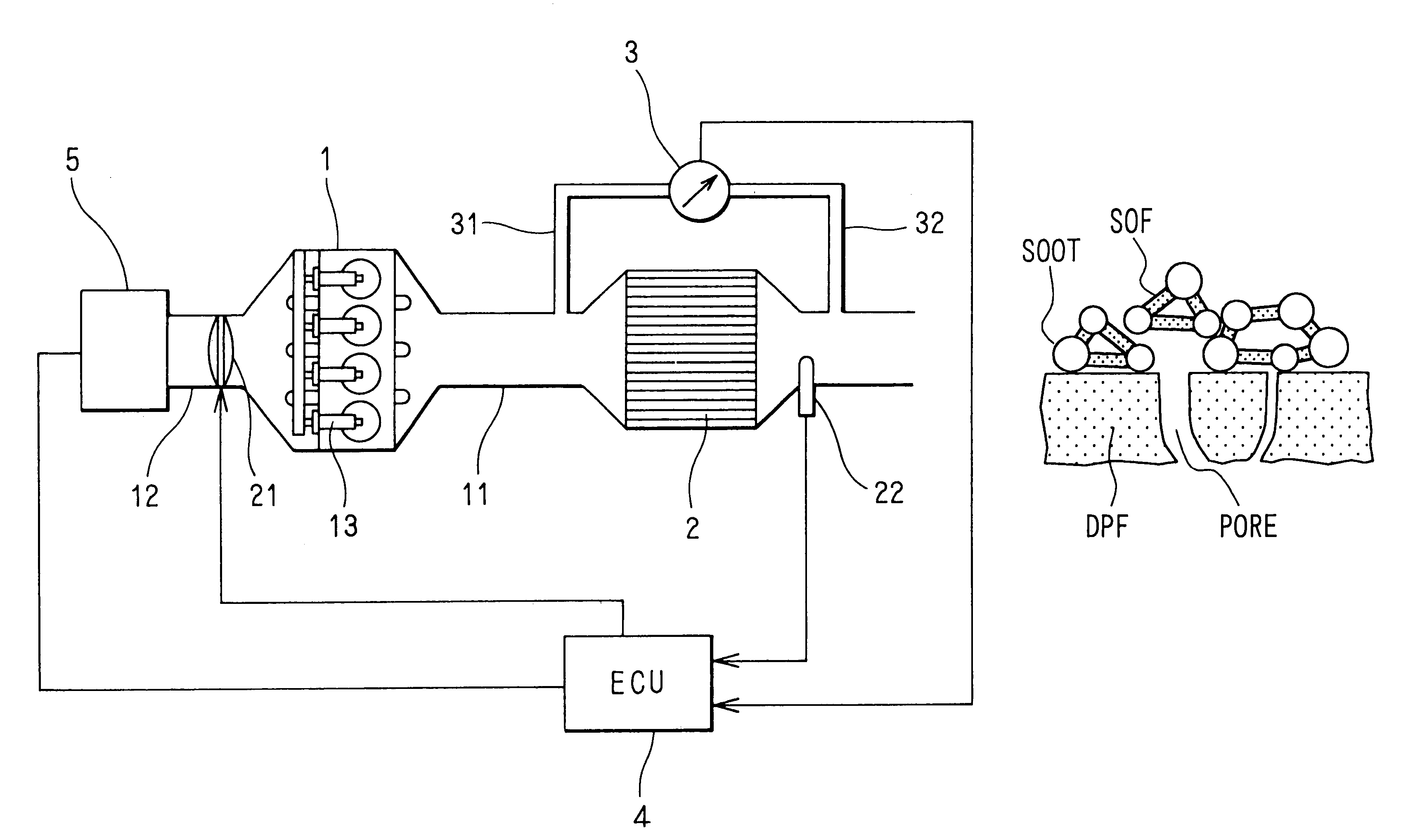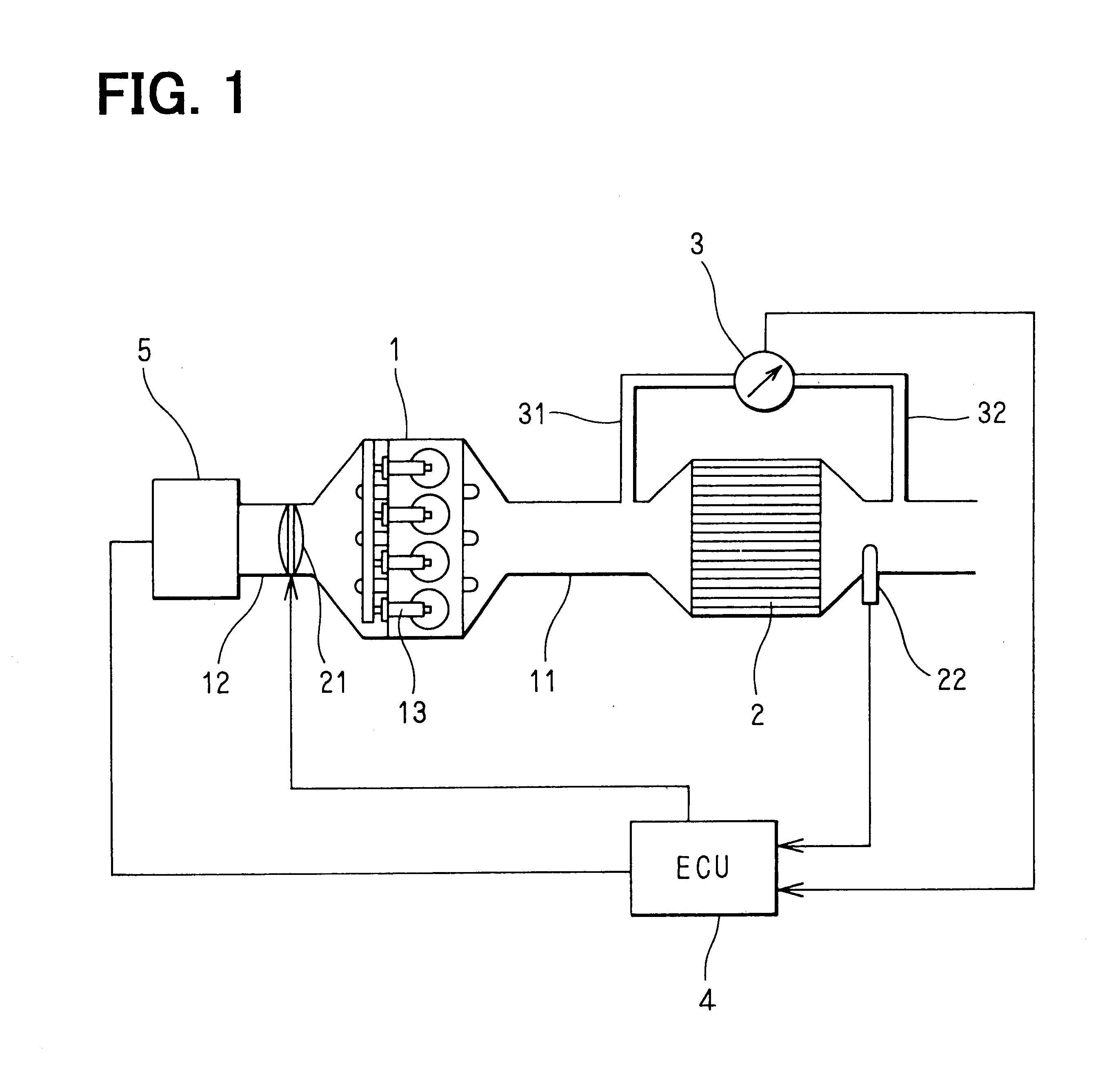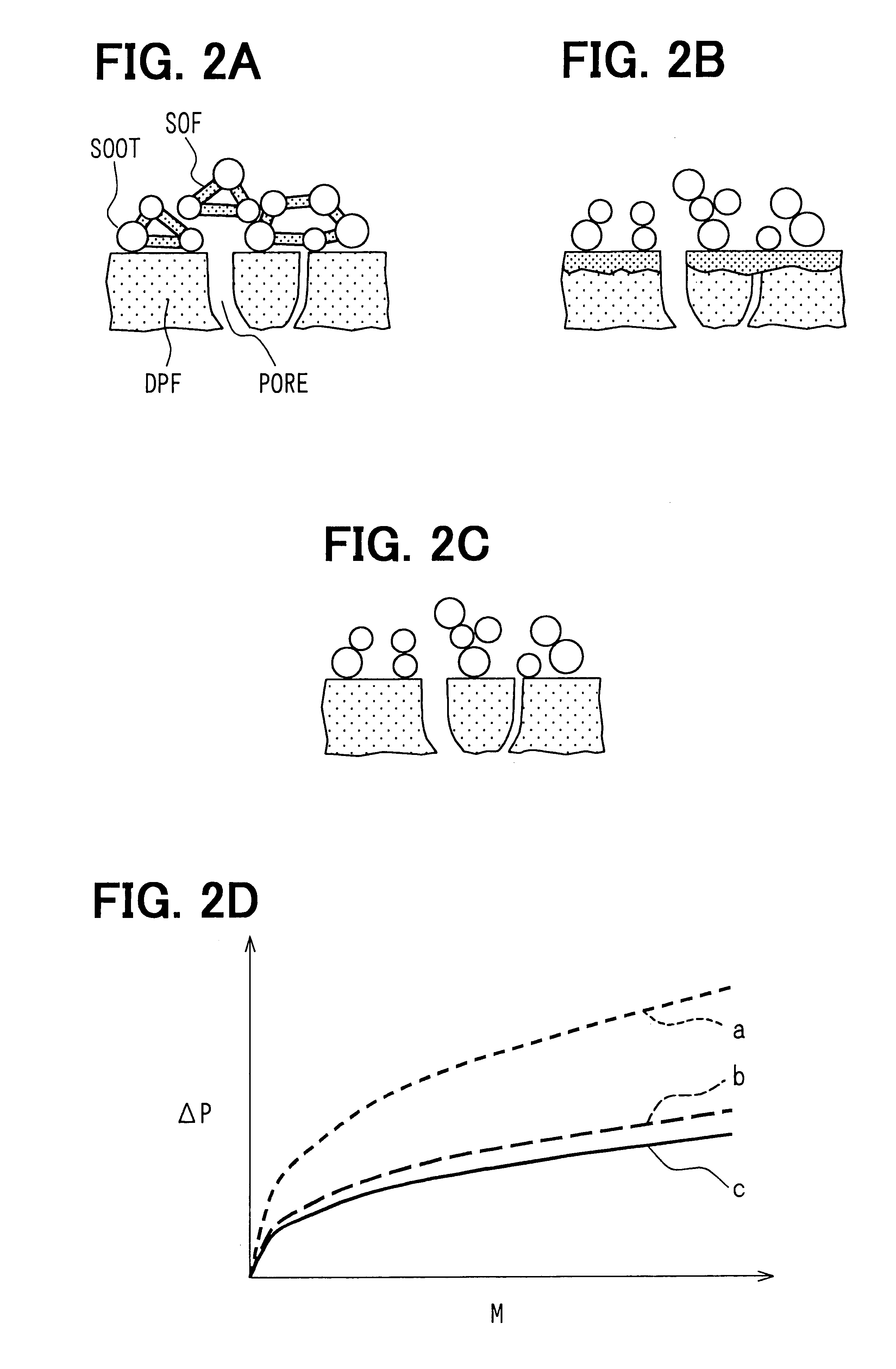Exhaust gas purification system having particulate filter
a technology of exhaust gas purification system and particulate filter, which is applied in the direction of machines/engines, electrical control, separation processes, etc., can solve the problems of increased pressure loss in the dpf, difficulty in calculating the precise pm trapped quantity, and deficiency such as the lowering of engine outpu
- Summary
- Abstract
- Description
- Claims
- Application Information
AI Technical Summary
Problems solved by technology
Method used
Image
Examples
first embodiment
(First Embodiment)
Referring to FIG. 1, an exhaust gas purification system of a diesel engine 1 is illustrated. A diesel particulate filter (DPF) 2 is disposed in an exhaust pipe 11 of the engine 1. The DPF 2 has a publicly known structure. The DPF 2 is made of heat-resistant ceramics such as cordierite and is formed in the shape of a honeycomb. The honeycomb has a matrix of porous filter walls forming a multiplicity of cells extending from one end to another end of the honeycomb. An inlet side end or an outlet side end of each cell is blocked alternately. The exhaust gas discharged from the engine 1 enters the cells whose inlet side ends are open. When the exhaust gas passes through the porous filter wall, particulate matters (PM) are trapped.
A pressure difference measuring device 3 such as a plurality of pressure sensors is disposed in order to measure a quantity of the particulate matters trapped by the DPF 2 (PM trapped quantity). Pressure in the exhaust pipe 11 in the upstream o...
second embodiment
(Second Embodiment)
A regeneration control method of the exhaust gas purification system according to the second embodiment will be explained based on FIGS. 6 and 7. In the exhaust gas purification system, after the DPF 2 is heated to the temperature at which the SOF can be eliminated by the gasification or the oxidization, the PM trapped quantity is calculated based on the pressure difference between the upstream and the downstream of the DPF 2 and the exhaust gas flow rate. The exhaust gas flow rate is calculated from the measured values of the DPF temperature and the intake airflow rate. Meanwhile, change of the PM trapped quantity with time is calculated. If the change of the PM trapped quantity with time becomes equal to or less than a predetermined value, the SOF is determined to be substantially eliminated. The PM trapped quantity at that time is measured. When the measured PM trapped quantity becomes equal to or larger than a predetermined quantity, the DPF 2 is regenerated b...
PUM
| Property | Measurement | Unit |
|---|---|---|
| temperature | aaaaa | aaaaa |
| temperature | aaaaa | aaaaa |
| temperature | aaaaa | aaaaa |
Abstract
Description
Claims
Application Information
 Login to View More
Login to View More - R&D
- Intellectual Property
- Life Sciences
- Materials
- Tech Scout
- Unparalleled Data Quality
- Higher Quality Content
- 60% Fewer Hallucinations
Browse by: Latest US Patents, China's latest patents, Technical Efficacy Thesaurus, Application Domain, Technology Topic, Popular Technical Reports.
© 2025 PatSnap. All rights reserved.Legal|Privacy policy|Modern Slavery Act Transparency Statement|Sitemap|About US| Contact US: help@patsnap.com



